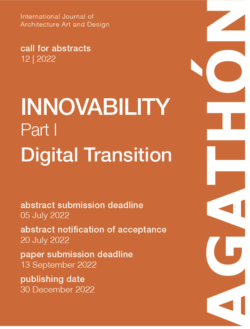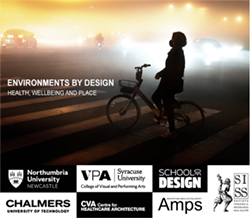ISSN (online): 2079-4991
Call of the Journal:
- Carbon Nanoparticles for Strain Sensing and Damage Monitoring
- Computational Modeling and Simulation for Nanomaterials, Nanotechnology, and Nanoscience
- Conductive Nanocomposites and Their 3D Printing
- II-VI Semiconductor Nanocrystals and Hybrid Polymer-Nanocrystal Systems
- Nanomaterials Based on IV-Group Semiconductors
- Nanostructured Catalysts for Sustainable Applications
Oct
2021
Nov
2021
Metals are the most frequently used conductive materials; however, they have important drawbacks such as corrosion and high density (heavyweight), and they are expensive to process. Hence, during the last decade, technological breakthroughs and research focus in the field of conductive materials have been intensely directed towards the development of conductive nanocomposites (CNC). CNCs are usually composed of conductive fillers such as carbon nanotubes, graphene, and metal nanowires, dispersed in an insulating matrix. Polymer-based CNCs benefit from the intrinsic properties of polymers (i.e., light weight, low cost, corrosion resistance, and easy processing) combined with tunable electrical conductivity derived from their adjustable filler morphology and properties. CNCs have shown promising electrical properties which are useful for various applications, such as in sensors, electronics, electromagnetic interference (EMI) shielding, and lightning strike protection in airplanes. Conventional methods used for forming CNCs (e.g., solvent-casting, compression molding, or injection molding) usually require the utilization of molds, while additive manufacture (AM) or 3D printing (3DP) methods build forms from a digitally designed 3D model without mold fabrication. This feature of 3DP makes this method one of the most promising methods suitable for direct fabrication of the final conductive parts and complex structures, as well as prototyping for experimental studies. To date, different types of 3D printing methods, such as fused deposition modeling (FDM), selective laser sintering (SLS), stereolithography (SLA), and solvent-assisted 3DP have been developed. The titled Special Issue aims to cover current research studies in the field of conductive nanocomposites which are useful for additive manufacturing. Advanced composite fabrication approaches with characterizations showing their potential in the field of 3D printing (e.g., rheological behavior) and innovative 3D printing methods and materials are very welcome.
SwitzerlandConductive Nanocomposites and Their 3D Printing
Metals are the most frequently used conductive materials; however, they have important drawbacks such as corrosion and high density (heavyweight), and they are expensive to process. Hence, during the last decade, technological breakthroughs and research focus in the field of conductive materials have been intensely directed towards the development of conductive nanocomposites (CNC). CNCs are usually composed of conductive fillers such as carbon nanotubes, graphene, and metal nanowires, dispersed in an insulating matrix. Polymer-based CNCs benefit from the intrinsic properties of polymers (i.e., light weight, low cost, corrosion resistance, and easy processing) combined with tunable electrical conductivity derived from their adjustable filler morphology and properties. CNCs have shown promising electrical properties which are useful for various applications, such as in sensors, electronics, electromagnetic interference (EMI) shielding, and lightning strike protection in airplanes. Conventional methods used for forming CNCs (e.g., solvent-casting, compression molding, or injection molding) usually require the utilization of molds, while additive manufacture (AM) or 3D printing (3DP) methods build forms from a digitally designed 3D model without mold fabrication. This feature of 3DP makes this method one of the most promising methods suitable for direct fabrication of the final conductive parts and complex structures, as well as prototyping for experimental studies. To date, different types of 3D printing methods, such as fused deposition modeling (FDM), selective laser sintering (SLS), stereolithography (SLA), and solvent-assisted 3DP have been developed. The titled Special Issue aims to cover current research studies in the field of conductive nanocomposites which are useful for additive manufacturing. Advanced composite fabrication approaches with characterizations showing their potential in the field of 3D printing (e.g., rheological behavior) and innovative 3D printing methods and materials are very welcome.
Chemical Abstracts (ACS), Current Contents – Physical, Chemical & Earth Sciences (Clarivate Analytics), DOAJ, Genamics JournalSeek, Inspec (IET), Journal Citation Reports / Science Edition (Clarivate Analytics), Julkaisufoorumi Publication Forum (Federation of Finnish Learned Societies), Polymer Library (Smithers Rapra), PubMed (NLM), Science Citation Index Expanded – Web of Science (Clarivate Analytics), Scopus (Elsevier), Web of Science (Clarivate Analytics), Zetoc (British Library), CLOCKSS (Digital Archive), PubMed Central (NLM), Academic OneFile (Gale/Cengage Learning), EBSCOhost (EBSCO Publishing), Engineering Source (EBSCO), Google Scholar, J-Gate (Informatics India), Materials Science & Engineering (ProQuest), METADEX/Metals Abstracts (ProQuest), ProQuest Central (ProQuest), Science In Context (Gale/Cengage Learning), WorldCat (OCLC).
Info at: www.mdpi.com/journal/nanomaterials/apc
Guest Editor
Dr. Kambiz Chizari










